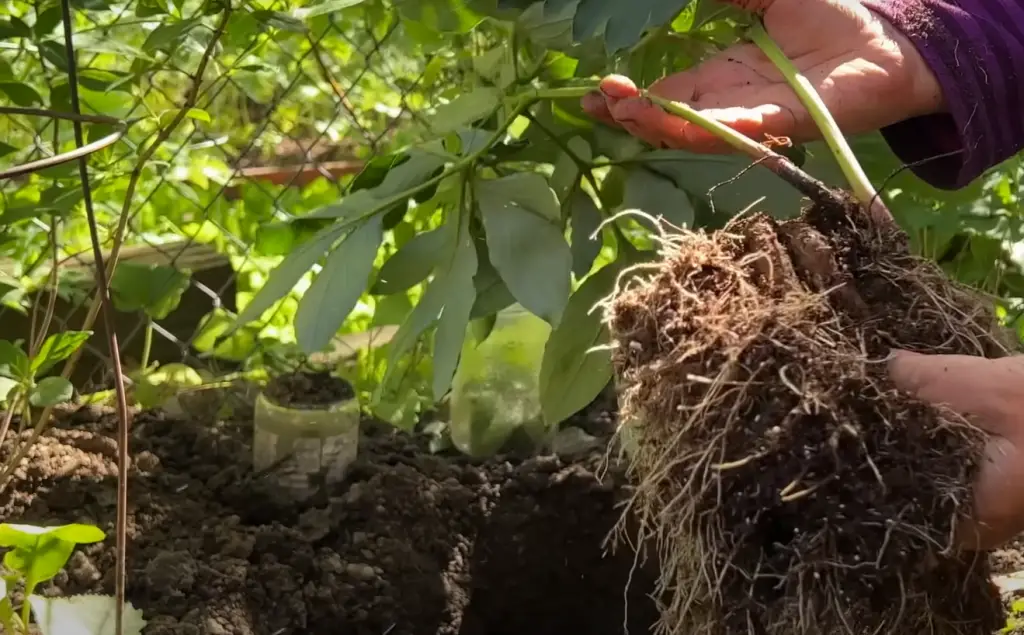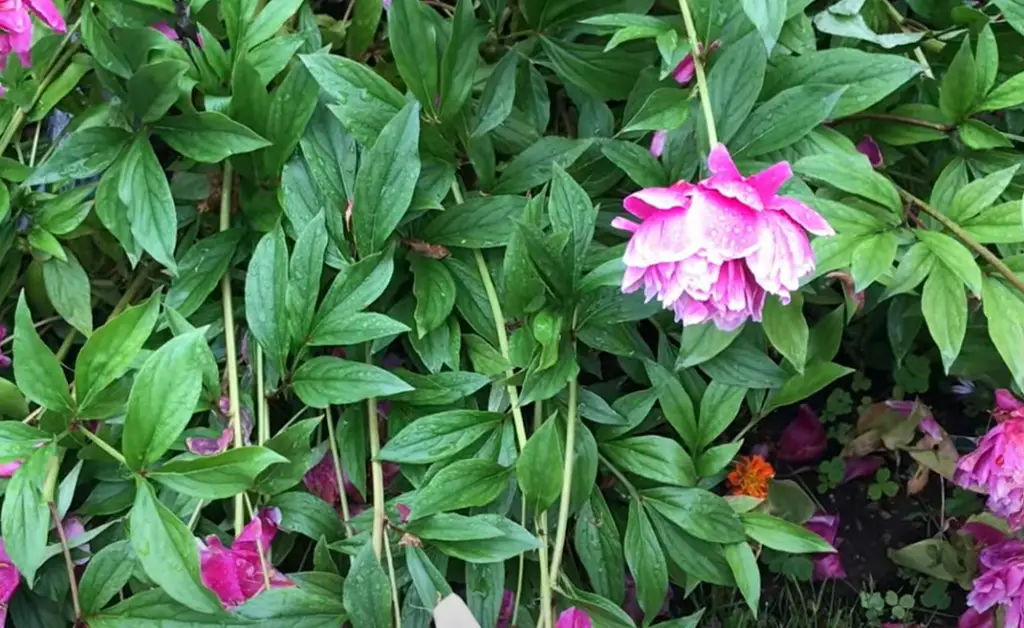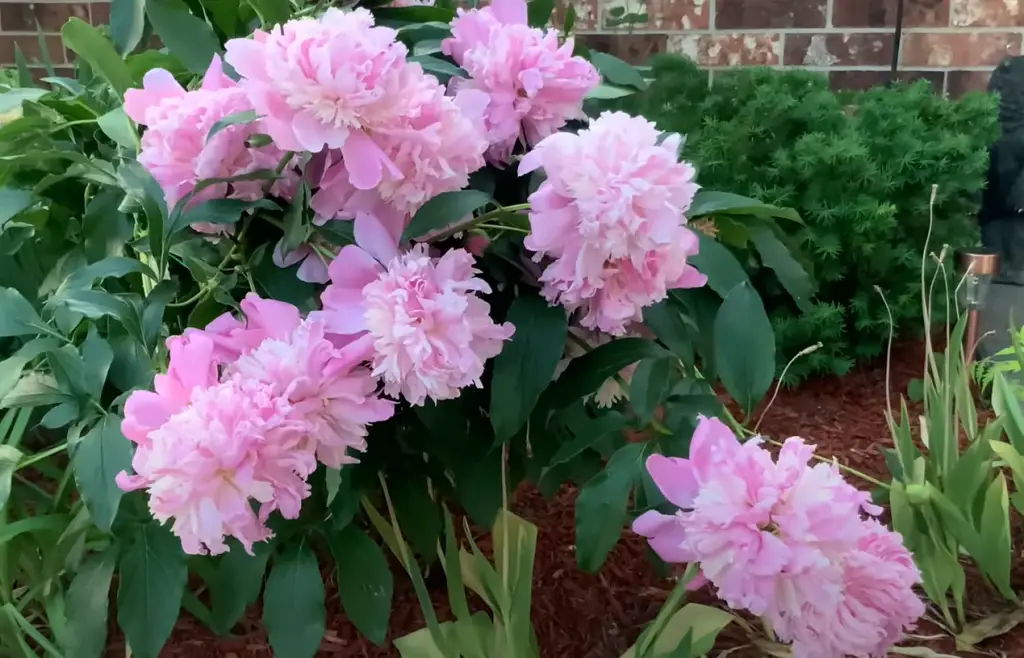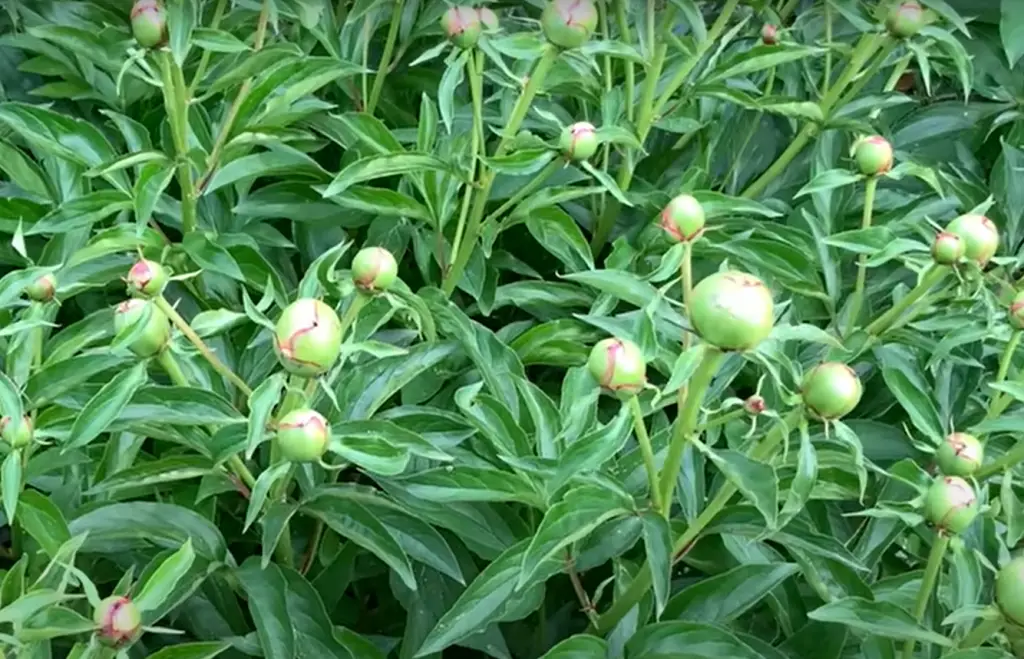Taking care of our flower gardens can be a lot of work and deadheading peonies is just one of the many tasks that need to be done. Deadhead peonies regularly to keep your peony blooms attractive, maintain their longevity and growth, and promote better blooming in subsequent seasons. If you’re not familiar with ‘deadheading’ or don’t know how to do it properly, this blog post will explain everything you need to know! Not only will you learn the basics, but also some tips on making an even more beautiful garden full of colorful blooms – so hang tight and read on!
What are Peonies?
Peonies are a beautiful and popular flower that have been grown in gardens for centuries. They come in many different colors including white, pink, red, and yellow.
The flowers of this plant are typically large and full of petals which make it a perfect choice for cut flowers. To ensure your peonies stay healthy and look their best, it is important to deadhead them regularly. Deadheading peonies is an easy way to keep your plants looking great all season long!Why Deadhead Peonies?
Deadheading peonies is important for a few reasons. It helps promote the growth of more blooms, encourages better air circulation around the foliage and stems, and keeps your plant looking neat and tidy. Additionally, deadheading peonies usually results in larger flowers overall.

This makes it an ideal task to complete regularly if you want your peony plants to look their best! Deadheading can also help with preventing disease since it removes dead or diseased foliage from the plant. By removing these parts of the plant before they have a chance to spread infection, you are helping keep your peonies healthy and vibrant. [1]
When to Deadhead?
The best time to deadhead peonies is after they finish blooming. Once the flowers fade and die back, remove them from the plant by cutting the stem off below the bloom. This will prevent your plants from wasting energy on producing seeds and will also keep them looking neat and tidy. Make sure you are using clean, sharp scissors or pruners to avoid damaging the stems of the peony. Additionally, it’s important to cut all of the stems down to a similar height in order to maintain an even shape for your peony bush.
After deadheading, allow your peony bush a few weeks before pruning again as this will give it time to recover and grow healthy new buds for next year’s blooms. Additionally, it will also help promote vigorous growth in the spring. This is because pruning encourages new stem growth and can help to shape your peony bush into a nice rounded form. To do this, simply cut back any stems that are too long or unruly by cutting them just below the bud located at the base of each stem. When you’re done, make sure to fertilize your peony bush with a balanced fertilizer in order to keep it healthy and encourage bountiful blooms next year!
Gather Tools and Materials Needed for Deadheading Peonies
Before you can deadhead peonies, it’s important to have the right tools and materials. This includes garden clippers or scissors, thick gardening gloves for protection against thorns, a bucket or container for discarded stems and foliage, and a trowel for removing any remaining roots. Gardening shears are also useful if you need to get into tight spots between stems. All of these tools should be cleaned before use to prevent the spread of disease among plants.
Once you have your tools assembled, you’re ready to start deadheading your peonies!
Step-by-Step Guide on How to Deadhead a Plant
Remove Spent Flowers with Pruning Shears or Fingertips
To keep your peonies looking their best, it’s important to regularly remove spent flowers as they appear.

Use pruning shears or pinch off the faded blooms with your fingertips.
Cut Back in Stages
After the initial deadheading, wait for a few weeks to allow the buds and flowers to mature and wither away. Cut the plant back in stages, removing one third of the stems at a time. This method will ensure that you get plenty of blooms throughout the season with minimal effort. [2]
Cut at an Angle
To ensure the flowering stem doesn’t rot, make sure to cut at an angle. This will help the water run off and not settle in any one spot on the newly cut stem. For woody stemmed perennials like peonies, use sharp pruning shears or scissors to accomplish this task.
Keep Fertilizer Away From Deadhead Areas
Make sure to keep fertilizers away from where you deadhead as it can cause burning. Apply fertilizer before or after deadheading if needed, but never near freshly cut stems.
Cut Close to The Base of Flower
When cutting back perennial plants that flower multiple times during a single season, such as peonies, make sure to cut close to the base of the flower head. This will help to promote new flowering stems and remove the exhausted stem without damaging new growth.
Monitor for Diseases or Insects
Be sure to keep an eye out when deadheading peonies for any signs of disease or insects that could be present on the plants. If any are seen, perform additional pruning and consider treating with an insecticide as well as adjusting your watering and fertilizing schedule in order to restore health to the plant.
Repeat As Needed
Deadhead perennials like peonies regularly throughout their growing season as needed in order to ensure healthy blooms. Peonies may need to be deadheaded several times during the summer months in order to maintain peak condition and performance.

By following these steps, you’ll be able to keep your peonies looking their best all season long. With proper care and maintenance, you can look forward to a beautiful display of blooms every year.
Tips and Tricks for Deadheading Peonies
- Gather your supplies. To deadhead peonies, you’ll need a pair of pruning shears with long handles and sharp blades. You may also want to wear gloves or use a hand tool for protection from thorns on some types of peonies.
- Cut off spent flowers at the base of the stem. If there are several flowers in close proximity, cut off all spent blooms at once so that you don’t damage any healthy buds too close to them.
- Cut off old foliage as needed throughout the season to maintain an attractive appearance and prevent fungal diseases from developing within dense foliage.
- Remove all dead plant material including stems, leaves, and flower heads from around the plant’s base and discard it in a compost pile or trash bin. [3]
- If your peony produces long, thin branches (known as suckers), remove these whenever you see them to prevent the plant from becoming overcrowded.
- Deadhead any remaining flowers that begin to fade or turn brown at the end of the season. This will help promote blooms for next year’s flowering season.
- Mulch around your peonies in late fall, using an organic material such as bark chips or leaves, to protect them from extreme temperatures and help retain moisture during winter months.
- Prune back tall stems if necessary once a year during dormancy (usually in late fall). Cut stems back to about six inches above soil level.
Common Mistakes to Avoid When Deadheading Peonies
Don’t Prune Too Early or Too Late in the Season
Pruning your peonies too early in the season can prevent them from flowering correctly, while pruning them too late may result in fewer blooms. Be sure to prune only after the plants have finished flowering and before new buds start forming.
Don’t Cut Too Far Down on Stems
When deadheading, it is important not to cut too far down into a stem, as this can damage the plant and reduce its vigor. It is best to remove only the spent flowers and leaves, leaving at least three healthy leaves behind. [4]
Don’t Snip off All of the Leaves
After the flowers on your peony plants have faded, you will want to deadhead them. Deadheading is the practice of snipping off the spent flower heads and stems from a plant in order to promote new growth.

When it comes to peonies, however, don’t be too hasty to snip off all of the leaves as well.
Don’t Leave Dead Flowers on the Plant
When deadheading peonies, it is important to remember not to leave any deadhead flowers or seed pods on the plant. These can harbor disease and be a breeding ground for pests. To remove the spent flowers from the plant, use your fingers or small scissors to pluck them off one at a time.
If you are dealing with more mature plants, anvil pruners may be necessary for a clean cut around each stem near where it meets the branch. Be careful when using pruners not to damage any nearby buds or stems that may still have blooms left on them.Don’t Cut Off Too Much Foliage During Pruning
When deadheading peonies, it is important to remember not to remove too much foliage from the plant. Peonies need a certain amount of leaves and stems in order to photosynthesize and produce flowers in the upcoming season. If you cut off too many of the foliage branches, you could risk drastically reducing your plant’s flower production for next year. When pruning peony plants, make sure to focus only on removing spent flowers and any excess foliage that may be growing around them. This will ensure that your plant remains healthy and vibrant without sacrificing its ability to bloom for years to come. [5]
Benefits of Properly Deadheading Peonies
Aside from improving the overall aesthetic of your garden, properly deadheading peonies can also increase their health and longevity. By cutting off old blooms, you stimulate growth in dormant buds which helps to ensure a healthy flowering season each year. This is especially important when it comes to hybrid or newer varieties of peony that may not be as hardy as older varieties. Deadheading encourages new buds to emerge for next season’s growth, ensuring the plants will remain vibrant and healthy for many years to come. Additionally, regularly deadheading will help prevent disease and pest infestations by removing diseased foliage before it spreads throughout the plant.
Furthermore, if you are looking to collect seeds from your peonies, then regular deadheading is essential in order to ensure that the seeds are viable. The process of deadheading also helps you manage the size and shape of your peonies, as it allows you to control the number of blooms and their location on the plant. By removing old blooms, you can help direct new growth in specific areas for a more aesthetically pleasing look.
Proper Care for the Next Growing Season
Once you have deadheaded the peony, it is important to store and care for them properly in order to ensure they are healthy and ready for the next growing season. When storing peonies, keep them in a cool, dry place away from direct sunlight. Make sure that they are not exposed to moisture or humidity as this could cause rot or fungal diseases. Additionally, be sure that the soil or potting mix surrounding the peony remains slightly moist throughout the storage period.

To promote healthy growth in future years, fertilize your peonies just before their winter dormancy period begins in late autumn.
This will help ensure the peonies are well-nourished and in optimal condition for the following growing season.Finally, it is important to mulch around your peony plants during winter months as this will help insulate their roots from extreme temperature changes. If you live in an area with particularly cold winters, you may want to consider covering your peony with burlap or other protective material during this time of year. Following these steps will help keep your peonies healthy and thriving for years to come! [6]
FAQs
How often should I deadhead my peonies?
It is best to deadhead your peonies regularly throughout the growing season. This will help promote healthy new growth and keep them looking vibrant. Deadheading should begin when the first flowers have begun to fade and can be done every two weeks or so until late summer, when the plant has no more blooms.
Will pruning help encourage more blooms?
Yes, pruning or deadheading peonies will encourage more blooms. Deadheading involves removing the spent flowers from your garden. This allows the plant to focus its energy on producing new flowers instead of setting seed.

When deadheading, it’s important to ensure that you cut off just the flower and not the stem or foliage as these are needed for energy production. You should also remove any wilted leaves to help improve air circulation around the plant. With a little bit of care and attention, your peonies will bloom again in no time!
Is it necessary to use pruning shears when deadheading peonies?
Yes, it is important to use pruning shears when deadheading peonies. This will help ensure that the stem is cut cleanly and at a 45-degree angle. Pruning shears make it easier to avoid damaging any remaining buds or leaves and can give you more control over the shape of your plants. It also ensures that you don’t damage any other part of the plant while removing spent flowers. Lastly, using pruning shears will help prevent disease from spreading from one flower to another. With proper cleaning and maintenance, they should last for many years of use so investing in a good pair is highly recommended. Be sure to disinfect them after each use by wiping with rubbing alcohol or Lysol spray to prevent the spread of disease.
What other ways can I take care of my peonies in between seasonal prunings?
In addition to deadheading peonies, there are several other ways that you can take care of your plants in between seasonal prunings. Watering your plants regularly and making sure they have enough drainage and light is essential for keeping them healthy. You should also fertilize your peony plant a few times during the growing season using a balanced 10-10-10 fertilizer. Mulching around the base of the plant is also helpful for retaining moisture and preventing weed growth. Finally, keep an eye out for pests, such as aphids or Japanese beetles, which can be harmful to your peonies if left unchecked. Applying insecticidal soap or neem oil may help control these pests if needed. With just a bit of regular maintenance, your peonies can be beautiful and healthy for many years to come!
What happens if I don’t deadhead my peony flowers?
If you don’t deadhead your peony flowers, the plant will focus its energy on producing seeds instead of putting out more blooms. This will result in fewer and smaller flower heads as the season progresses. Additionally, neglected peonies can suffer from stem rot due to excessive moisture on their petals if not properly cared for. To keep your peonies looking beautiful throughout the season, it is important to deadhead them regularly and provide proper care. By following these steps you can be sure to enjoy colorful blooms from your peony plants for many years to come!
Where do you cut peonies after they bloom?
The best time to deadhead peonies is after they have finished flowering. Cut back the spent flower stems at a 45-degree angle, followed by trimming off any leaves that may have become discolored or wilted. Make sure to use sharp pruning shears and sterilize them in between cuts with rubbing alcohol.
How long do cut peonies last after they bloom?
Cut peonies generally last between 5-7 days after they bloom. However, in order to prolong the life of cut flowers, it is important to regularly change the water and trim any wilting leaves or petals from the stems. Additionally, keeping them away from direct sunlight and drafts will help them last longer. If you want to make your peonies last as long as possible, consider treating them with a flower preservative. This can help keep bacteria away and help your blooms stay fresh for up to two weeks. Finally, remember that if you are using a vase for your peonies make sure to always clean it thoroughly before use!
How do I get my peonies to bloom twice?
Peonies can be rebloomed if the spent flowers are deadheaded. This involves removing the faded flower heads and seed pods, which will stimulate additional blooms later in the summer. To help ensure your peony plants are healthy and producing plenty of new blooms, remove deadheads as soon as possible after they fade. Another way to encourage multiple bloom cycles is to fertilize peonies with a low-nitrogen fertilizer twice a year—once in April, and again in July or August. This should help promote strong stem growth for added flowering potential later in the season. Lastly, make sure your peony plants get at least six hours of sunlight per day. With these simple steps, you can enjoy abundant blooms from your peonies all summer long.
Why are peonies expensive?
Peonies are expensive because of their short bloom season and the cost associated with caring for them. Peonies require a lot of care and attention in order to reach their full potential, including pruning, deadheading, dividing and fertilizing. All of these tasks involve time, effort and resources, which contribute to the price tag that comes attached to peonies. Furthermore, since peonies have such a short bloom period, growers often struggle to meet the demand for them during this brief window of time. Consequently, they must charge more for peony blooms to make up for lost sales outside of peak season. Additionally, many rare varieties are also considered costly as they can only be found in exclusive nurseries or specialty shops. Despite all this, the beauty and elegance of peonies make them worth every penny.
What are the benefits of deadheading peonies?
Deadheading peonies has multiple benefits that help to keep them looking their best throughout their blooming season. By removing wilted flowers and spent blooms, you can encourage a bushier growth habit and prevent the plant from wasting energy on producing seedpods. This will also promote more buds to form, giving you more flowering potential in future bloom cycles. Furthermore, removing old blooms will keep your garden looking tidy and can reduce disease pressure by eliminating the chances of fungi spores developing in decaying petals or stem tissues.
Useful Video: How to Deadhead Peonies
Final Thoughts
Deadheading peonies may seem like a tedious task, but the rewards are great. Not only will your garden look better and be more healthy, you’ll also get to enjoy beautiful blooms for weeks longer. A few minutes spent deadheading can make a world of difference in the overall health and appearance of your peonies. With the proper care and maintenance, these gorgeous flowers can bring beauty to your garden all season long!
Happy Gardening!
References:
- https://www.homesandgardens.com/gardens/deadheading-peonies
- https://www.gardenerbasics.com/blog/deadheading-peonies
- https://www.bunnysgarden.com/how-to-deadhead-peonies/
- https://plantscraze.com/how-to-deadhead-peonies/
- https://finance.yahoo.com/news/deadhead-peonies-expert-reveals-benefits-070045774.html
- https://www.express.co.uk/life-style/garden/1451637/Dead-head-peonies-how-to-deadhead-peonies-step-by-step-evg










Leave a Reply
View Comments